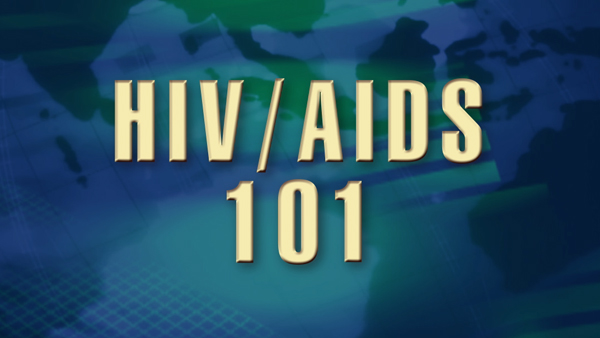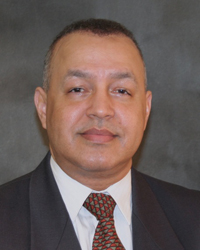Digital Press Kit
National Latino AIDS Awareness Day
While HIV poses a serious health threat to all Latinos, different Latino communities are impacted in different ways. In conjunction with National Latino AIDS Awareness Day (October 15), CDC releases new data reinforcing that the epidemic among Latinos is as diverse as the community itself here in the United States.
The new analysis finds that Latinos in the Northeast have the highest HIV diagnoses rates in the nation. In addition, HIV-positive Latinos in the Northeast are more likely to have been infected through intravenous drug use, compared to other regions. In contrast, Latinos in the South have the highest number of new diagnoses and are more likely to be infected through male-to-male sexual contact than Latinos in the Northeast. Regardless of region, male-to-male sexual contact was the primary mode of transmission among Latinos in the U.S., overall.
- Hispanics represent approximately 16 percent of the United States population and account for an estimated 19 percent of people living with HIV in the United States and 20 percent of new infections.
- The rate of new HIV infections among Latino men is almost three times that of white men, and the rate among Latinas is more than four times that of white women.
- Gay and bisexual men account for the largest proportion of HIV infections among Latinos overall, but different Latino communities are impacted in different ways.
On this NLAAD, let us recognize and leverage the strength of diverse Latino communities in the fight against HIV. For more information on HIV, please visit www.cdc.gov/hiv. To find HIV testing locations near you, please call 1-800-CDC-INFO or visit www.hivtest.org.
“HIV continues to pose a serious health threat to Latino communities in the United States. If we hope to end the United States epidemic, we must stem the spread of HIV among Latinos – the nation’s fastest growing ethnic population. Each of us has a role to play.”
-Donna McCree PhD, MPH, RPh, Associate Director for Health Equity, Centers for Disease Control and Prevention
“With the guidance of the National HIV/AIDS Strategy, CDC is committed to prioritizing HIV prevention efforts in highly affected populations, like Latinos. But CDC cannot do it alone. Communities must start and continue a dialogue about HIV – get the facts, know your risk and get tested. We must tackle the social obstacles that bar many from being tested and treated. Everyone and every action counts.”
-Donna McCree PhD, MPH, RPh, Associate Director for Health Equity, Centers for Disease Control and Prevention
“NLAAD is a reminder that we have the power to take control of our health and protect ourselves against HIV. First: if you are sexually active or inject drugs, you may be at risk. But the good news is that HIV is preventable. There are things we can all do, starting today, to protect ourselves and our partners. Get tested for HIV – this is the first step in protecting yourself and your partners. If you are sexually active, practice safe sex. Finally, we must create safe spaces in our homes, schools and places of worship to talk about HIV”
-Emilio J.German MSHSA, Public Health Analyst-Coordinator for Hispanic or Latino Health Equity Activities, Centers for Disease Control and Prevention
CDC Resources
- National Latino AIDS Awareness Day
- National HIV and STD Testing Resources: Spanish | English
- CDC HIV/AIDS: Spanish | English
- Basic Information about HIV and AIDS: Spanish | English
- HIV Among Latinos: Spanish | English
- High-Impact HIV Prevention
- National Center for HIV/AIDS , Viral Hepatitis, STD, and TB Prevention
- NCHHSTP Newsroom
- CDC en Español
- Free Publications
Additional Resources
CDC works 24/7 saving lives and protecting people from health threats to have a more secure nation. Whether these threats are chronic or acute, manmade or natural, human error or deliberate attack, global or domestic, CDC is the U.S. health protection agency.
National Center for HIV/AIDS, STD, and TB Prevention Media Line
404-639-8895
NCHHSTPmediateam@cdc.gov
NCHHSTP Newsroom

National Latino Aids Awareness Day

Estimated New HIV infections among Hispanics/Latinos, 2009, By Transmission Category

Estimated Rate of New HIV Infections, 2009, by Gender, Race/Ethnicity
Podcast
Video
HIV/AIDS 101

Author: National Center for HIV, Viral Hepatitus, STD, and TB Prevention. Division of HIV/AIDS Prevention.
Date: 07/11/2012
HIV/AIDS 101
Get email updates
To receive email updates about this site, enter your email address:
Contact Us:
- Centers for Disease Control and Prevention
1600 Clifton Rd
Atlanta, GA 30333 - 800-CDC-INFO
(800-232-4636)
TTY: (888) 232-6348 - Contact CDC-INFO





